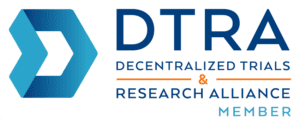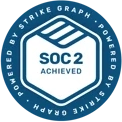Coastal Pediatric Research (CPR), is a research site based in Charleston, SC, dedicated to pediatric research and sub-specialty pediatric research. After gathering supportive feedback from their sponsors, CROs, and CRAs, the site determined an eRegulatory system would be an extremely beneficial investment. In this three-part series, we explore CPR’s journey to adopting Complion’s eRegulatory solution which has enabled the site to increase efficiency, greatly improve time management, and eliminate duplication of work while conducting their clinical research studies.
CPR was well aware of the eRegulatory trend that was surfacing. However, would an eRegulatory system be something that proved to be extremely beneficial to them as a site? To prove it could add value, the site gathered feedback from sponsors, CROs, and CRAs, asking their opinion on if such a system were adopted: How would sponsors take it as a CRO or CRA? Would they be open to using an eRegulatory system at their site? Would it make site visits more productive in terms of previewing the patient data versus the regulatory piece and would it make it any easier for them as well?
Every partner and research staff member indicated they would be very supportive of Coastal adopting an eRegulatory system.
“It was very reassuring that they more open to the possibility than we had anticipated,” says Julia Brenner, MHA, finance and regulatory manager for Coastal Pediatric Research. “That was really the trigger for us to move forward with eRegulatory.”
Selection Process
And so began CPR’s search for an eRegulatory system. But first, the site gave some thought as to what they wanted such a system to provide. Their main requirements were:
- 21 CFR Part 11 compliance. A point that Brenner emphasized was essential for any eRegulatory system that would be considered.
- User friendly for all research staff and partners. At CPR, all their coordinators manage the regulatory component of their studies versus a separate regulatory coordinator as it the case at other research sites. CPR wanted an eRegulatory system that was not only manageable but also easy for their coordinators to navigate.
- Allow customization of the regulatory binder structure. CPR did not want a cookie cutter format. They needed a flexible design that would fit the needs of variety of studies they conducted.
- Enable elimination of duplicate work. Many of CPR’s sub investigators see patients at more than one clinic. Additionally, sub investigators work on multiple studies across multiple sites. If a sub investigator updated their CV, several copies would need to be printed and filed at all the various locations and for the different studies.
- Ability to streamline staff signatures. The distance between the sites varied from 11 miles to 30 miles. The distance disparity alone was causing quite a challenge for the research staff traveling from one location to another to get signatures. This was particularly true for those coordinators who were also balancing study obligations with getting signatures and wet copies.
- Allow integration with site systems. In particular, CPR wanted to utilize more of the regulatory component of their CTMS.
After looking at their needs and seeing a demonstration of Complion’s eRegulatory solution, CPR made their final decision. This was the vendor that could best meet their requirements.
Advantages of Complion eRegulatory
- Accessible from anywhere. The web-based application can be securely accessed on a laptop or desktop computer anywhere internet connectivity is available.
- Multi-site access. If a document is filed at one site, it is instantly accessible at another.
- Remote monitoring. Ability to easily share only relevant binders directly with monitors through controlled view-only access.
Brenner notes this is one of the biggest advantages of moving to Complion. The investigator can finish in the clinic, go home at the end of the day, sign in to Complion in the comfort of their home and sign a follow-up letter from a monitor, all without disrupting his or her workflow in the clinic.
- Compliance and audit readiness. Documents can be organized in a familiar “binder” interface to enable key information to be easily searched. All documents and user actions can be tracked in an automatic audit trail providing access to viewing and modification history. Documents can then be easily compiled into one single formatted PDF with one easy click.
Since a document is uploaded only once and is then accessible from all relevant binders wherever that document is accessed, there is only one “source of truth”. Revisions to the document are automatically updated wherever document is filed and accessed.
Brenner knows when she updates a medical license for one of CPR’s investigators who is on working on a couple different studies, the license can be uploaded once and it is automatically filed with all the respective binders the investigator is delegated to be in.
- Efficiency with filing, monitoring, and signing of documents. Documentation is easily imported directly into the system from scanners, email, or other digital sources. Through standardized naming conventions for every document type and pre-configured binder templates, consistency and standardization can be created across all sites and all trials. There are no lost or misplaced documents.
CPR found Complion’s eRegulatory system provided not only consistency, but also standardization. That equated to less time devoted to management of regulatory documentation.
To further prove this point, when CPR looked at the time tracking coordinators had submitted before implementing Complion and then after, there was a 40 percent reduction in time. That was time that could now be devoted to recruitment and patient visits.
- Integration with other site systems. The Complion platform augments and is compatible with existing systems that manage institutional review boards (IRB), trial databases, patient registries, billing, coverage analysis, Electronic Data Capture (EDC), biospecimens and/or staff tracking.
- Search capabilities. Leveraging document attributes to the file versus copies and folders, enables the file to be easily searchable and automatically filed in all relevant binders.
Coastal’s CRAs are quite pleased with Complion’s search capabilities. In the event a CRA does not want to take time to search through different folders, they plug in the information they are looking for into the Complion’s search bar and are able to quickly pull it up from there.
- Configurable user permissions. Actions and access for binders and documents is role-based at the individual user level. Internal/external staff, monitors, CROS and sponsors, can only access those document or binders they have permission to view. Additionally, documents can be easily shared/unshared for review, and tasks assigned like eSignatures.
Tasks and reminders can be set for each reviewer; they are compiled in the system to easily view what still needs completed. Staff can be removed just as easily from tasks, documents or binders that are no longer appropriate for their view/access.
Complion’s cloud-based software solution has enabled CPR to increase their efficiency with filing, monitoring, and signing documents. Also, the site has greatly improved their time management and the need to file duplicate documentation in multiple locations has been eliminated, resulting in reduced space and costs associated with paper storage.
Next, Part 2 in this series: How Coastal Pediatric Began Implementing an eRegulatory solution.
Ready to learn more about the Complion platform? Schedule a demonstration.






